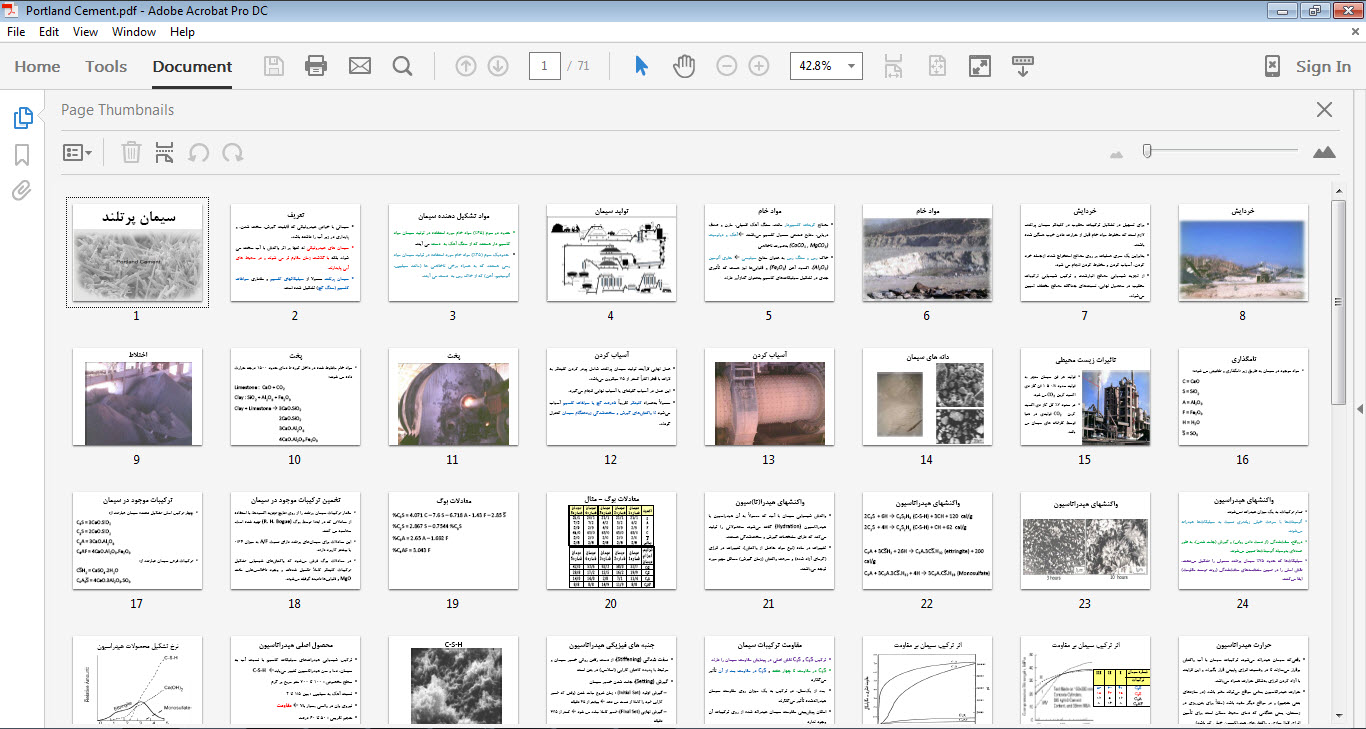لینک دانلود و خرید پایین توضیحات
فرمت فایل word و قابل ویرایش و پرینت
تعداد صفحات: 26
مقاله در مورد سیمان پرتلند :
Portland cement
Sampling fast set concrete made from Portland cement
Portland cement is the most common type of cement in general usage in many parts of the world, as it is a basic ingredient of concrete, mortar, stucco and most non-specialty grout. It is a fine powder produced by grinding Portland cement clinker (more than 90%), a maximum of about 5% gypsum which controls the set time, and up to 5% minor constituents (as allowed by various standards). As defined by the European Standard EN197.1, "Portland cement clinker is a hydraulic material which shall consist of at least two-thirds by mass of calcium silicates (3CaO.SiO2 and 2CaO.SiO2), the remainder consisting of aluminium- and iron-containing clinker phases and other compounds. The ratio of CaO to SiO2 shall not be less than 2.0. The magnesium content (MgO) shall not exceed 5.0% by mass." (The last two requirements were already set out in the German Standard, issued in 1909). Portland cement clinker is made by heating, in a kiln, a homogeneous mixture of raw materials to a sintering temperature, which is about 1450 °C for modern cements. The aluminium oxide and iron oxide are present as a flux and contribute little to the strength. For special cements, such as Low Heat (LH) and Sulfate Resistant (SR) types, it is necessary to limit the amount of tricalcium aluminate (3CaO.Al2O3) formed. The major raw material for the clinker-making is usually limestone (CaCO3). Normally, an impure limestone which contains SiO2 is used - the CaCO3 content can be as low as 80%. Secondary raw materials (materials in the rawmix other than limestone) depend on the purity of the limestone. Some of the secondary raw materials used are: clay, shale, sand, iron ore, bauxite, fly ash and slag. When a cement kiln is fired by coal, the ash of the coal acts as a secondary raw material.
History
Portland cement was developed from cements (or correctly hydraulic limes) made in Britain in the early part of the nineteenth century, and its name is derived from its similarity to Portland stone, a type of building stone that was quarried on the Isle of Portland in Dorset, England. Joseph Aspdin, a British bricklayer, in 1824 was granted a patent for a process of making a cement which he called Portland cement. His cement was an artificial hydraulic lime similar in properties to the material known as "Roman Cement" (patented in 1796 by James Parker) and his process was similar to that patented in 1822 and used since 1811 by James Frost who called his cement "British Cement". The name "Portland cement" is also recorded in a directory published in 1823 being associated with a William Lockwood and possibly others. Aspdin's son William in 1843 made an improved version of this cement and he initially called it "Patent Portland cement" although he had no patent. In 1848 William Aspdin further improved his cement and in 1853 moved to Germany where he was involved in cement making.[1] Many people have claimed to have made the first Portland cement in the modern sense, but it is generally accepted that it was first manufactured by William Aspdin at Northfleet, England in about 1842[2]. The German Government issued a standard on Portland cement in 1878.
Types of Portland cement
Genera
lThere are different standards for classification of Portland cement. The two major standards are the ASTM C150 used primarily in the U.S. and European EN-197. EN 197 cement types CEM I, II, III, IV, and V do not correspond to the similarly-named cement types in ASTM C 150.
Production
Schematic explanation of Portland cement production
There are three fundamental stages in the production of Portland cement:
1. Preparation of the raw mixture
2. Production of the clinker
3. Preparation of the cement
The chemistry of cement is very complex, so cement chemist notation was invented to simplify the formula of common oxides found in cement. This reflects the fact that most of the elements are present in their highest oxidation state, and chemical analyses of cement are expressed as mass percent of these notional oxides.

تحقیق درمورد مقاله در مورد سیمان پرتلند





